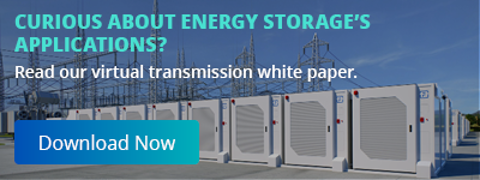As we enter 2022, I am thrilled to join the American Clean Power Association’s (ACP) Board of Directors. ACP is dedicated to uniting the clean energy sector – including storage, transmission, solar, and wind companies – to maximize our collective impact and change the way we power our world.
The energy storage sector is a key part of the broader clean energy ecosystem Fluence, and our colleagues at the ACP, are working to build. The sector has grown dramatically purely based on the economic value of energy storage in providing multiple applications. In the coming years, increasing renewable power generation will strengthen the long-term business case for greater energy storage deployment. Imagine how many more jobs we could create and how much more renewable energy we could deploy with policies designed to build U.S. manufacturing capability and enable this uniquely flexible asset to participate at its full potential in electricity markets.
The amount of investment in the energy storage sector will be massive in both the immediate term and long term, as will the benefits to the U.S. economy and job market. Wood MacKenzie’s ESA report investigated the economic impact of energy storage, estimating that energy storage in the U.S. will be a $7.6 billion annual market by 2025. Ford Motor Company and battery supplier SK Innovation recently announced a plan to invest more than $11.4 billion in new U.S. facilities that will create nearly 11,000 jobs to produce electric vehicles and batteries. General Motors and LG Chem also announced a new $2.3 billion battery factory to open late 2023 in Spring Hill, Tennessee with 1,300 jobs forecasted to be created. It will be the second US battery joint venture for the American and South Korean companies, following their first announcement of a $2.3 billion battery cell manufacturing plant in Lordstown, Ohio back in 2019.
I look forward to working closely with ACP’s leadership and fellow Board of Directors to realize the full potential that energy storage brings to our country. At the Energy Storage Association (ESA),we had a goal of getting to 100 GW by 2030; this is the vision we have in terms of market size for energy storage in the U.S., and I am confident our work with partners and stakeholders across the broader clean energy industry will enable us to reach it. We also look forward to working closely with the Biden Administration and members of Congress from both parties to enact a standalone storage Investment Tax Credit (ITC). By recognizing the full benefits of energy storage, we can deliver more cost-effective electricity to U.S. consumers, more resilient electric grid infrastructure, and a faster transition to our shared clean energy future.

















